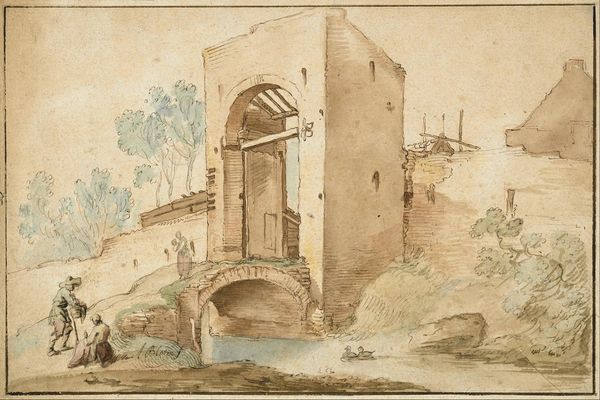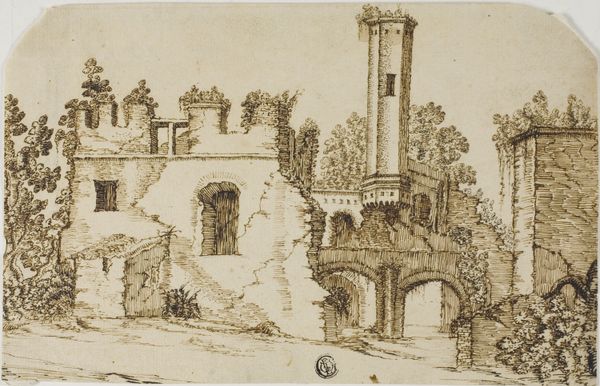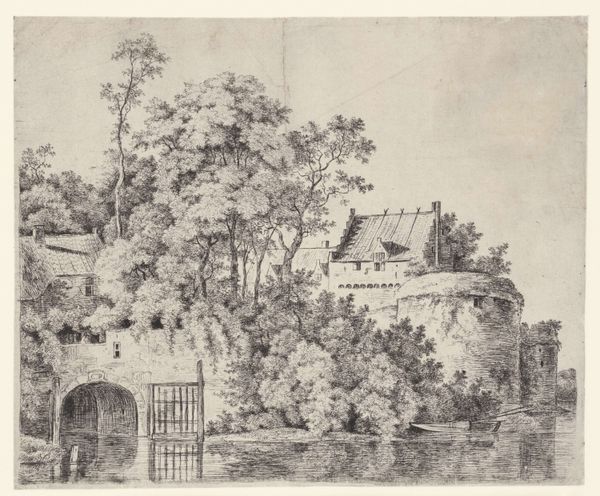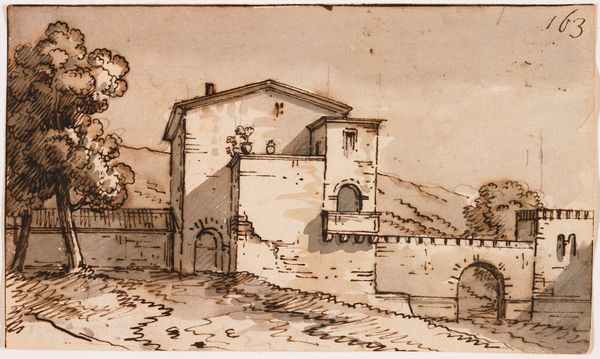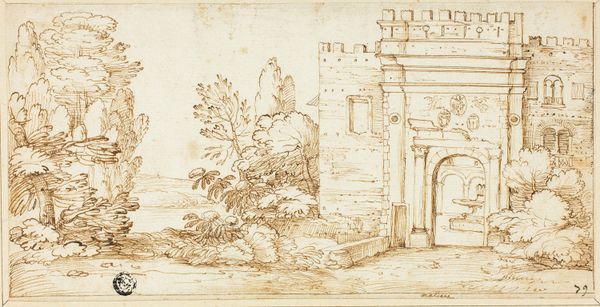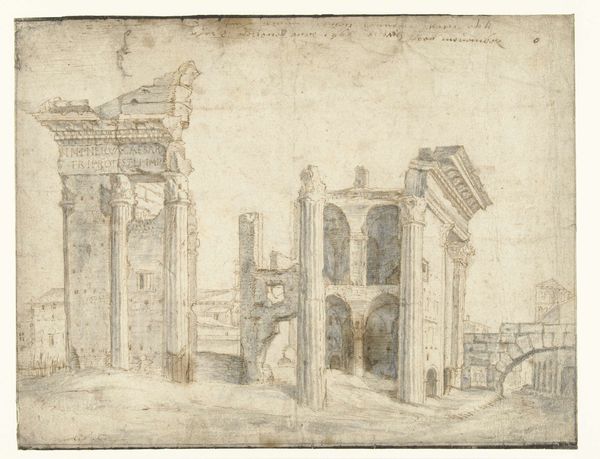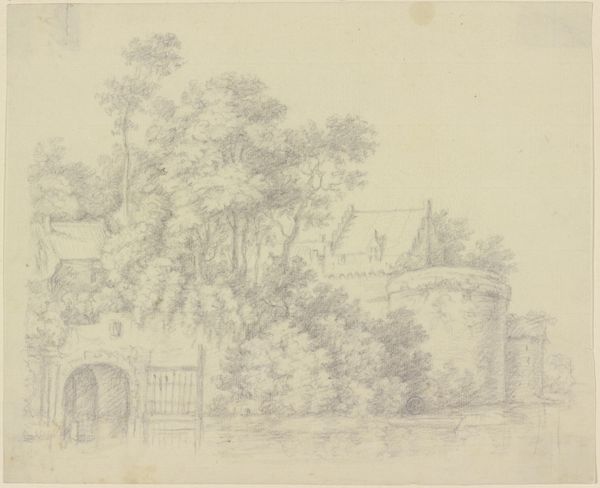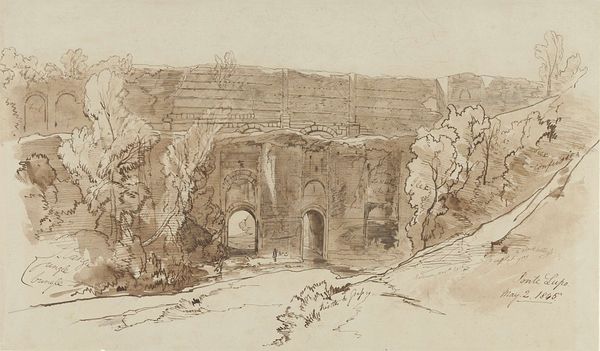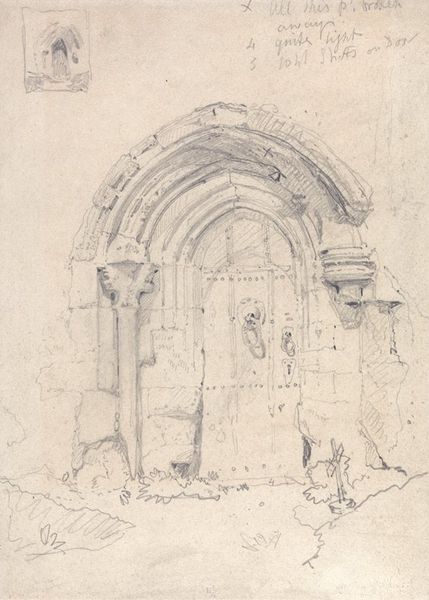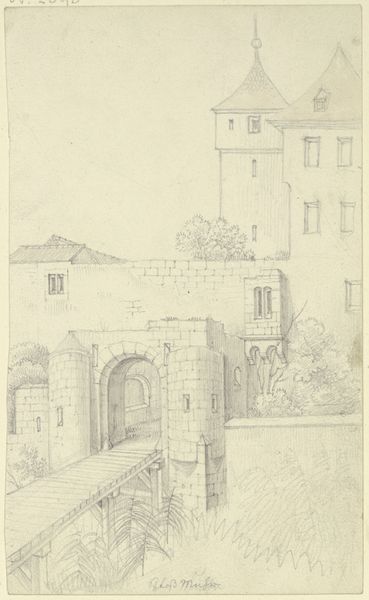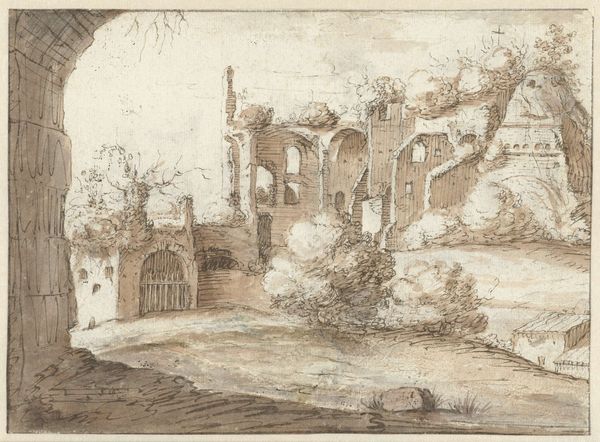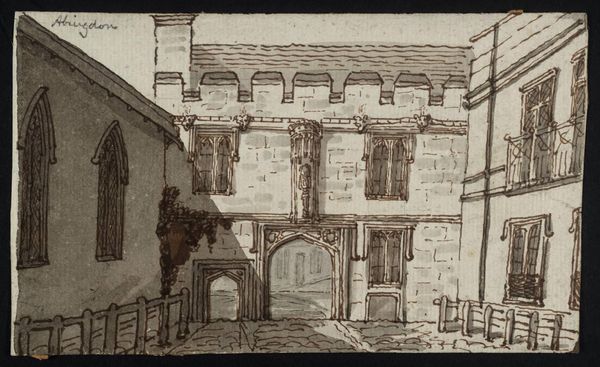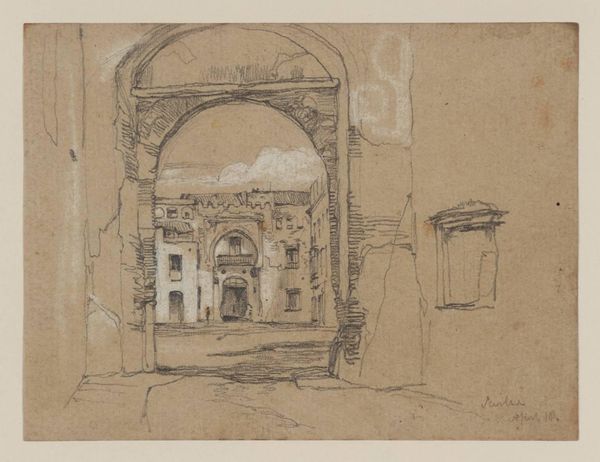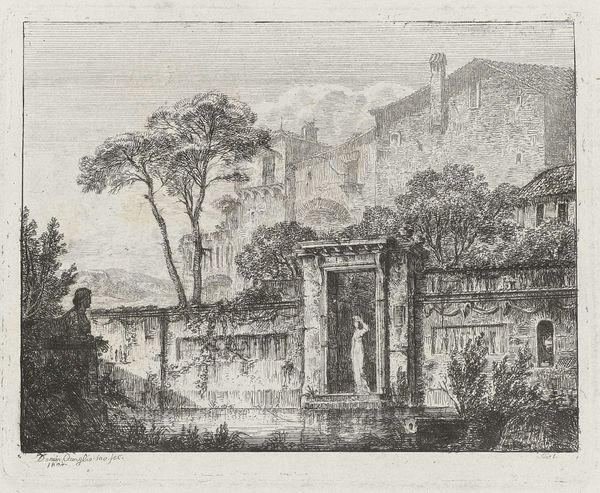
drawing, watercolor
#
drawing
#
baroque
#
landscape
#
watercolor
#
cityscape
Copyright: Public Domain: Artvee
Curator: Abraham Bloemaert’s watercolor and ink drawing, "Bridge and Gate," created around 1600, presents us with a somewhat melancholy scene, don’t you think? Editor: Indeed. The textures—the rough brick, the distressed wood—all contribute to a sense of decay and abandonment. Look at how Bloemaert uses washes of color to create a luminous effect. The strategic placement of the gate and arch constructs the main subjects within the work that lead the viewer through an immediate formal construction. Curator: But let's not overlook the socio-historical context. Cityscapes like these often reflected the political landscape of the time. Perhaps Bloemaert is subtly commenting on the fragility of man-made structures, set against the timeless backdrop of nature. We might even posit questions about trade routes. Was this gateway essential in bringing wealth into the city during the era, or defending against it? Editor: Interesting. From a purely structural perspective, observe how Bloemaert employs a limited palette—predominantly browns, whites, and greens—yet manages to convey a striking depth of form. The composition leads our eyes through the bridge's arch toward the looming gate, framed strategically by trees against the city walls. Curator: It begs the question, what events occurred within these very walls of this baroque landscape painting? What role did religious life play, or merchants of the day? This visual story, which, undoubtedly, has an effect on the social dynamics. Editor: Agreed. However, it's equally compelling to appreciate Bloemaert's virtuosity in creating varied textures and effects through meticulous line work. We have linear construction of a representational image. These structural devices cause a sense of drama between depth, scale and surface materiality. Curator: A testament to a city's continuous adaptation to both physical changes, through deterioration, and how human activities leave marks of time and societal memory, echoing the passage of centuries within it. Editor: Absolutely. Analyzing this with attention to both artistic style and structural integrity, is an attempt to discern more completely both technique and artist objective. The artist is using technique for personal aesthetic design to highlight representational elements that might evoke meaning for the viewer, through symbolic content.
Comments
No comments
Be the first to comment and join the conversation on the ultimate creative platform.
